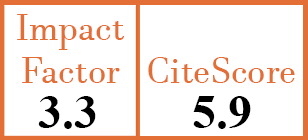Rapid paper
GITR/GITRL interaction promotes the expansion of T helper 9 and T helper 17 in psoriatic arthritis
L. La Barbera1, C. Rizzo2, M. Lo Pizzo3, D. Di Liberto4, M.P. La Manna5, L. Mohammadnezhad6, F. Camarda7, G. Sireci8, F. Ciccia9, G. Guggino10
- Department of Health Promotion, Mother and Child Care, Internal Medicine and Medical Specialties, Rheumatology section, P. Giaccone University of Palermo, Italy.
- Department of Health Promotion, Mother and Child Care, Internal Medicine and Medical Specialties, Rheumatology section, P. Giaccone University of Palermo, Italy.
- Biomedicine, Neuroscience and Advanced Diagnostic, University of Palermo, Italy.
- Biomedicine, Neuroscience and Advanced Diagnostic, University of Palermo, Italy.
- Biomedicine, Neuroscience and Advanced Diagnostic, University of Palermo, Italy.
- Biomedicine, Neuroscience and Advanced Diagnostic, University of Palermo, Italy.
- Department of Health Promotion, Mother and Child Care, Internal Medicine and Medical Specialties, Rheumatology section, P. Giaccone University of Palermo, Italy.
- Biomedicine, Neuroscience and Advanced Diagnostic, University of Palermo, Italy.
- Department of Precision Medicine, Rheumatology Section, University of Campania Luigi Vanvitelli, Napoli, Italy.
- Department of Health Promotion, Mother and Child Care, Internal Medicine and Medical Specialties, Rheumatology section, P. Giaccone University of Palermo, Italy. giuliana.guggino@unipa.it
CER18299
Rapid paper
Free to view
(click on article PDF icon to read the article)
PMID: 41004325 [PubMed]
Received: 02/11/2024
Accepted : 28/07/2025
In Press: 26/09/2025
Abstract
OBJECTIVES:
Psoriatic arthritis (PsA) is a chronic inflammatory disease characterised by the involvement of multiple targets. Accumulating evidence suggests the key role played by T helper (Th)9 and Th17 cells in PsA. Recently, the ability to activate GITR in promoting differentiation and proliferation of Th17 and Th9 cells has been investigated in several inflammatory conditions. We aimed to evaluate the effects of GITR/GITRL interaction in the immune responses underlying the disease, including the main PsA target sites.
METHODS:
Twenty-one PsA patients with active disease, naive to disease-modifying anti-rheumatic drugs, were enrolled. Peripheral blood mononuclear cells and synovial fluid (SF) mononuclear cells were collected to assess GITR and GITRL expression by flow cytometry. An in vitro functional assay with recombinant GITR agonist was performed to detect the effect on T cell subsets. Synovial and ileal biopsies were obtained to evaluate GITR and GITRL expression by immunofluorescence. Healthy subjects and osteoarthritis patients were enrolled as controls.
RESULTS:
We reported an increased in vitro expression of GITR among CD4+ T cells and its cognate ligand GITRL on antigen-presenting cells in PsA peripheral blood. In vitro, the addition of the GITR agonist resulted in increased expansion of Th9 and Th17 cells. Increased expression of GITR and GITRL was found even in PsA SF, synovium and ileum.
CONCLUSIONS:
Our results suggest a novel role of GITR/GITRL in promoting the expansion of Th9 and Th17 in PsA-inflamed tissues.


